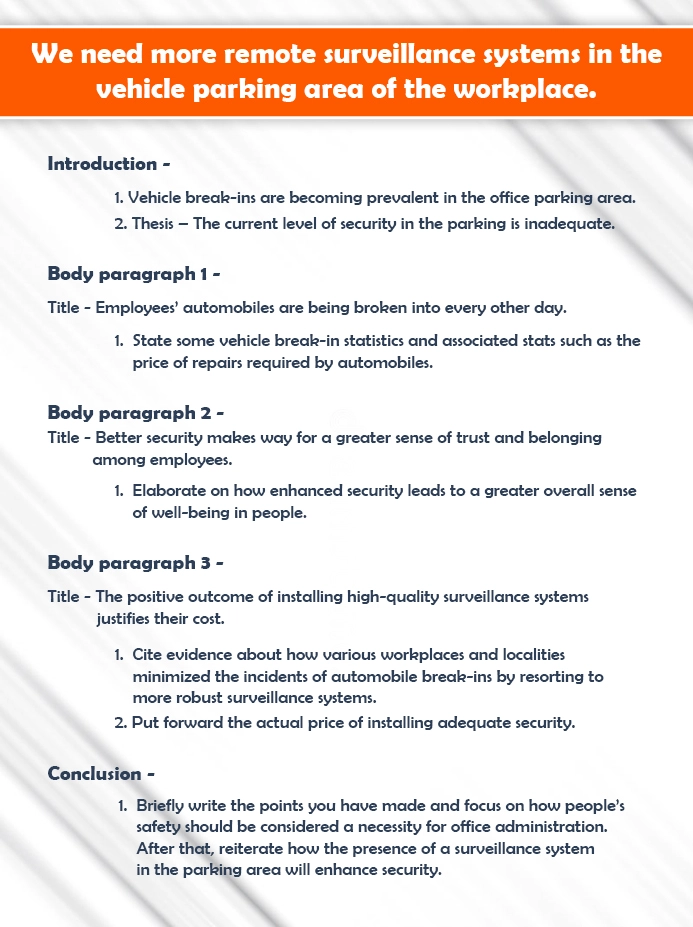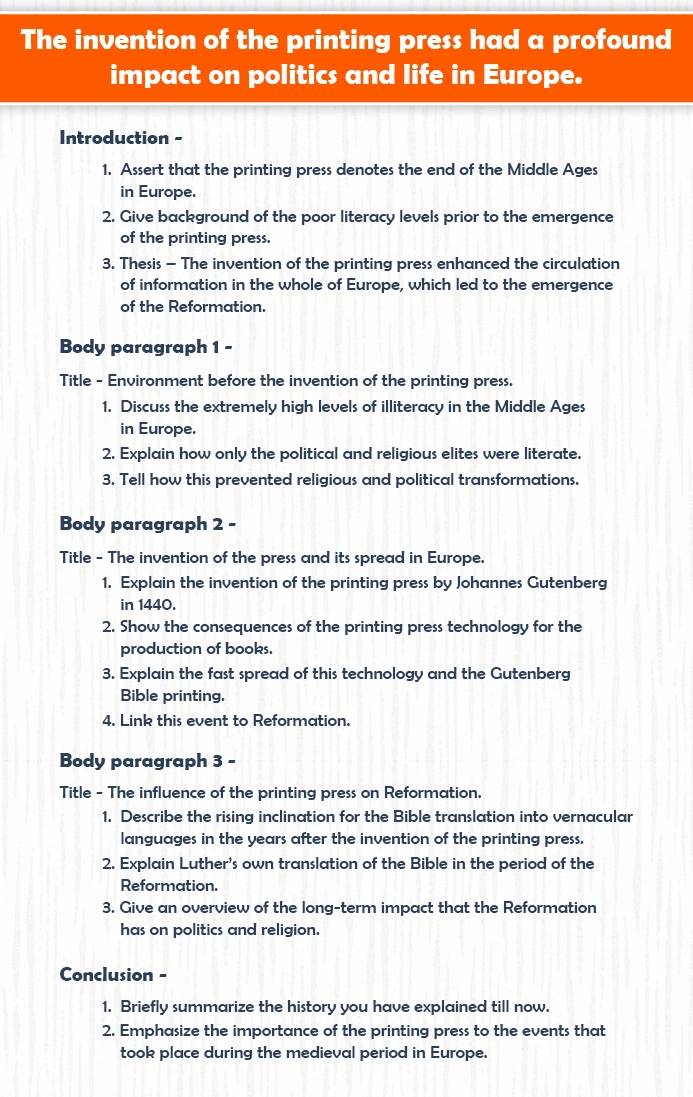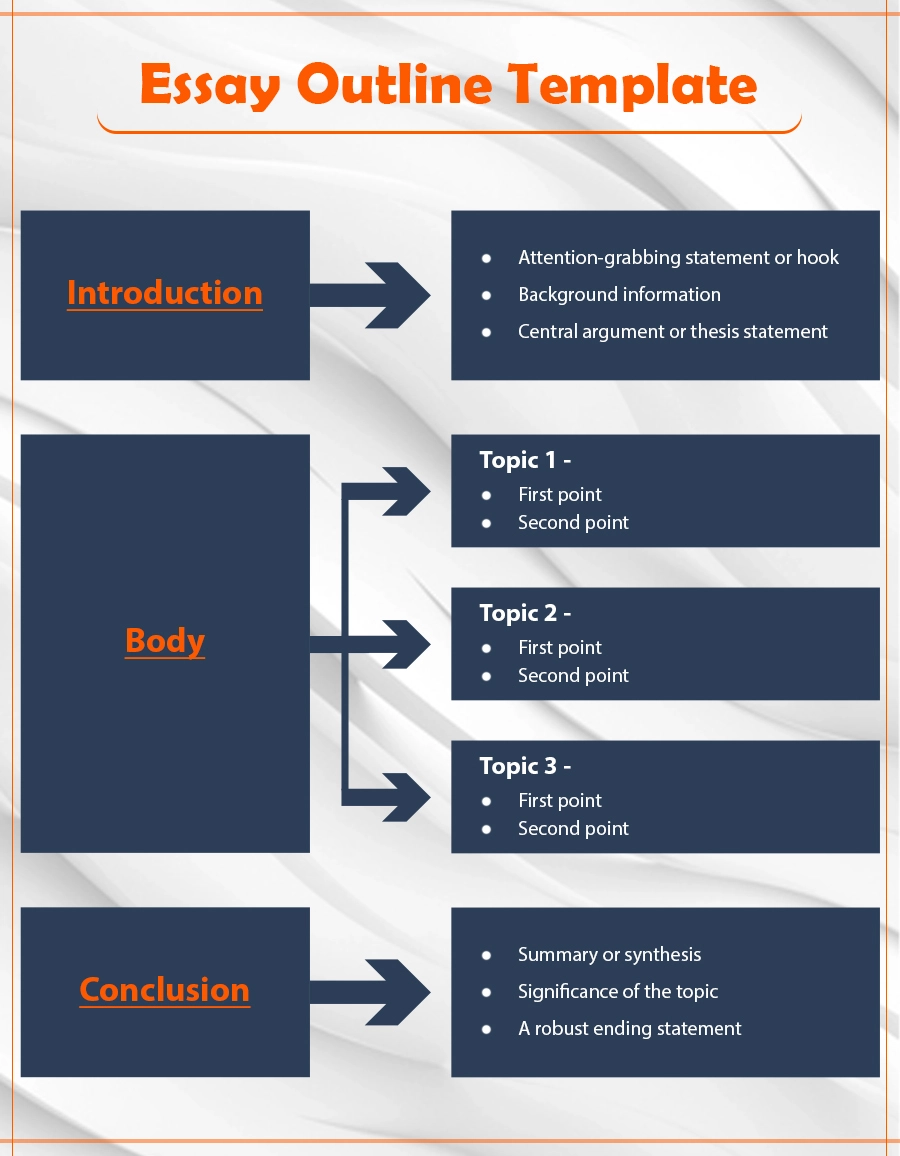Essays are significant academic work that school and university students need to compose regularly. An essay outline refers to the plan of the paper where you structure or organize the important points into sections so you can write your essay. Without creating an outline, you cannot write an essay. If you want to get that coveted A+ grade, you need to know how to organize your research in a specific place before you begin to write. In this comprehensive guide, you’ll understand an outline for your essay and find various examples and templates so you can craft your outline efficiently.
What Does Essay Outline Mean?
You can equate an essay outline to a visual representation of your work. It allows you to figure out the key points, thereby enabling your audience to get a gist of your paper by quickly scanning it. However, an outline also allows you, as a writer to visualize your completed work. It makes it simpler for you to figure out how to transition between sections or paragraphs and the order to follow for presenting the supporting paragraphs.
An outline is a neat roadmap that you adhere to while writing your essay. It helps students not to get stuck while they compose their essays. Now that you know exactly what is an essay outline, here are some points that’ll let you understand its significance.
- The outline allows the writer to organize their thoughts after researching a topic.
- The writer understands the information flow and can structure it by using the outline.
- It prevents the writer from missing essential details while composing the essay.
What Are the Principal Parts of an Essay Outline?
There are many different kinds of essays. They all share a common structure. Every essay has an introduction, a body that comprises paragraphs with arguments, and a conclusion. So, a typical outline includes all these three components. To know how to write an essay outline, you should be well-aware of what exactly comes in the introduction, body, and conclusion parts of an essay.
1. Introduction
It’s the first part of your essay. As the name suggests, it’s that paragraph where you introduce the subject you’ll cover in the rest of your essay. In the introduction, you state your thesis, which refers to the definitive sentence which makes your argument clear to the reader. While writing the introduction, remember to keep it as concise as possible. You should also write engagingly to attract the reader’s attention.
2. Body
Different essays require a different number of body paragraphs. The number of these paragraphs depends on your topic’s needs. Some need as little as two supporting paragraphs, while others may go up to five or six. Each paragraph should have the topic sentence and an argument related to your thesis. You should also provide:
- All the supporting facts.
- Data.
- Other evidence you are using to prove the topic sentence of your paragraph.
3. Conclusion
In conclusion, you summarize the main arguments you made in the body paragraphs. It’s a good practice to lay your own perspective on the topic here. You can also leave your readers with a thought-provoking question in the concluding portion.
Related Post: Narrative Essay
The Basic Template for Essay Outline
An outline essay template will help you understand the process of outlining an essay easily. It’s an effective method to organize your ideas and identify the order in which you’ll put them in front of the readers. Therefore, it’s important to create a set of sections in your paper and write the corresponding example according to your essay type.
Remember that an essay outline doesn’t need to comprise of complete sentences. It’s a rough outline, which means you are free to structure the arguments and facts in a way that appears most understandable to you. You just have to make the outline visually precise and clear so that you do not list any repetitive sections. Here is a sample outline template that every student must follow.
1. INTRODUCTION
- Attention-grabbing statement or hook
- Background information
- Central argument or thesis statement
2. TOPIC 1
A. First point
- First fact or evidence
- Second fact or evidence
B. Second point
- First evidence, fact, or statistic
- Second evidence, fact, or statistic
3. TOPIC 2
A. First point
- First evidence piece
- Second evidence piece
B. Second point
- First evidence
- Second evidence
4. TOPIC 3
A. First point
- First supporting data
- Second supporting data
B. Second point
- The first piece of data
- The second piece of data
5. CONCLUSION
- Summary or synthesis
- Significance of the topic
- A robust ending statement
Some Examples of Essay Outline
Outlines of different types of essays adhere to the same general structure. Still, there are a few differences among them, which the writer should keep in mind while outlining the varied types of essays. You’ll understand how to create an outline by going through an essay outline example of different types of essays.
1. Argumentative essay
An argumentative essay refers to a writing piece that utilizes facts and logical support to persuade the reader to a specific way of thinking. Here is an example outline of this essay type.
Example –

2. Persuasive essay
In a persuasive essay, the writer argues in favor or against a specific issue. An outline example for essay of this type is given below.
Example –

3. Expository essay
This type of essay clearly explains a specific topic, procedure, or set of concepts. An essay outline example of an expository essay is as follows.
Example –

How to Write an Essay Outline
Now that you know the significance of creating an outline before writing an essay, you can proceed to the steps for crafting it. These steps will allow you to make an outline or a structure that will assist you when the writing process begins. Follow them in the order described below.
1. Find the objective
You might not have a precise idea of your major argument when you are starting. But you should be familiar with the general concept and the point you’ll make. It’s essential to define your objective as it’ll help you to create an outline that touches on all the crucial points you require to support that objective. Put simply; you should know the following:
- What your essay is asking you to do.
- What’s the topic of the essay?
- Your thesis statement.
- Your audience.
2. Know your audience
Of course, you know that your professor will read and evaluate your essay. But you also need to know whom you desire to read our essay. Are you composing it for your colleagues or a set of audiences who are interested in exploring your essay topic? What do these people know about your issue? Also, find if your audience will agree with your assertions and how they will respond to what you have to say. You can identify the arguments that will work perfectly for your essay based on this. You will also be able to decide about the right resources to research from.
3. Pick out the points that’ll help you prove your assertion
After brainstorming, it’s time to analyze our notes and select only those points that’ll help you fulfill your essay objective. You must have written a lot of notes so ask yourself how a piece of specific information allows you to prove your point. If you find a clear answer, include it in the list of issues that you’ll make in your paper. Find the key arguments to make in the essay. Now use the list of points you’ve jotted to find the chief arguments you’ll write in your work. These will comprise the body parts.
Write down all the statistics and facts that back up every one of your arguments. These supporting points are a crucial part of an essay outline.
Related Post: Best Essay Writing Services
4. Write the outline by utilizing the template
After you clearly know the critical topics and supporting evidence, you can craft your outline. Use a template for this purpose. It will enable you to structure the chief points in a precise frame. It, in turn, will allow you to write relevant and clear content while you are preparing the first draft.
Conclusion
There are many essays, but when you are familiar with the basic structure for writing them, you can confidently compose them better. At the same time, you should also grasp the key differences in the different kinds of essays. Understanding them and creating your outline accordingly will increase the likelihood of crafting an academic work that pleases your readers. If you find the task too complicated or need some extra guidance and support, don’t hesitate to seek the help of essay writing services. The expert essay writers know how to research and structure different kinds of essays for students, so they get their desired grades.

